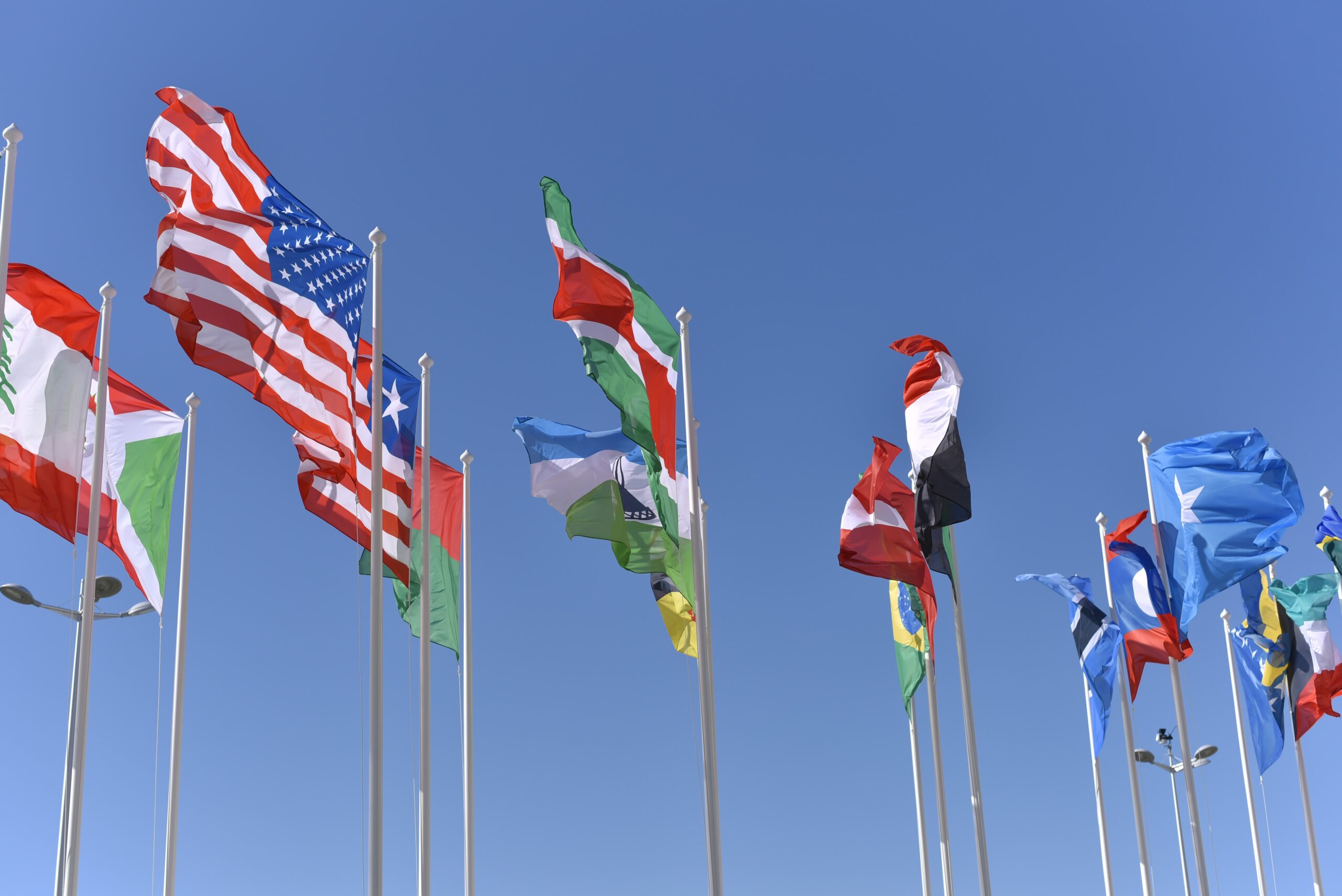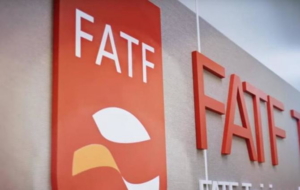Mutual Evaluation Reports (MERs)
Mutual Evaluation Reports (MERs) are comprehensive assessments conducted by international organizations, such as the Financial Action Task Force (FATF), to evaluate a country’s anti-money laundering and counter-terrorist financing (AML/CTF) regime. MERs provide an in-depth analysis of a country’s legal framework, regulatory measures, enforcement mechanisms, and effectiveness in combating money laundering and terrorist financing activities.
 Written by Erling Andersen
Written by Erling Andersen
Definition: Mutual Evaluation Reports (MERs) are comprehensive assessments conducted by international bodies, such as the Financial Action Task Force (FATF), to evaluate a country’s compliance with anti-money laundering! and counter-terrorist! financing standards.
Mutual Evaluation Reports play a crucial role in assessing a country’s effectiveness in combating money laundering! and terrorist financing activities. These reports provide an objective evaluation of a country’s AML/CFT regime, identifying areas of strength and areas that require improvement.
Note: While AML/CFT standards and regime are closely related concepts, they are not exactly the same.
AML/CFT Standards: AML/CFT standards refer to the set of international guidelines and best practices established by organizations such as the Financial Action Task Force (FATF) to combat money laundering! and the financing of terrorism. These standards provide a framework for countries and financial institutions to implement effective measures to prevent, detect, and report suspicious activities that could facilitate illicit financial transactions. AML/CFT standards outline specific requirements for customer due diligence, transaction monitoring, reporting of suspicious activities, and other compliance measures.
AML/CFT Regime: The AML/CFT regime refers to the comprehensive system of laws, regulations, policies, and procedures that a country or financial institution has in place to comply with the AML/CFT standards. The regime encompasses the legal framework and institutional arrangements required to ensure effective implementation and enforcement of AML/CFT measures.
In summary, AML/CFT standards set the guidelines and expectations for combating money laundering! and terrorist! financing, while the AML/CFT regime represents the actual implementation of these standards through laws, regulations, and institutional mechanisms. The AML/CFT regime is the practical application of the AML/CFT standards in a specific jurisdiction or organization.
Historical View
The concept of mutual evaluation emerged in the 1980s as a response to the growing global concern about money laundering! and terrorist! financing. The Financial Action Task Force (FATF), established in 1989, developed a framework for mutual evaluations to assess countries’ compliance with AML/CFT standards.
The first mutual evaluations were conducted in the early 1990s, focusing primarily on the assessment of technical compliance with AML/CFT standards. Over time, the evaluation process evolved to include the assessment of a country’s effectiveness in implementing AML/CFT measures and achieving desired outcomes.
The process of mutual evaluation involves a peer review system, where experts from other countries assess the AML/CFT regime of the country under review. The evaluators examine the country’s legal and regulatory framework, institutional arrangements, financial intelligence capabilities. Also supervisory systems, and international cooperation mechanisms.
Practical Examples
1. The Financial Action Task Force (FATF) conducts mutual evaluations of its member countries to assess their compliance with AML/CFT standards.
2. A mutual evaluation report of certain country identified strengths in its legislative framework but highlighted the need for improvement in its implementation and enforcement efforts.
3. The mutual evaluation report of certain country recognized its robust financial intelligence unit and effective international cooperation, while suggesting enhancements to its regulatory framework.
4. Based on a mutual evaluation report, certain country was commended for its strong preventive measures but was advised to strengthen its mechanisms for confiscating and recovering illicit funds.
5. The mutual evaluation report of certain country identified significant deficiencies in its AML/CFT regime, leading to the implementation of an action plan for remedial measures.
6. A mutual evaluation report revealed that certain country had made substantial progress in improving its AML/CFT regime since the previous evaluation, reflecting its commitment to addressing deficiencies.
7. The mutual evaluation report of certain country emphasized the importance of risk-based supervision and urged the country to enhance its supervisory practices.
8. A certain Country received a positive mutual evaluation report, recognizing its strong coordination among relevant authorities and effective implementation of preventive measures.
9. A mutual evaluation report highlighted the need for certain country to enhance its international cooperation mechanisms to effectively combat cross-border money laundering! and terrorist financing.
10. The mutual evaluation report of certain country praised its public-private partnership initiatives in combating money laundering! and recommended their replication in other jurisdictions.
Statistics
1. As of 2021, the FATF has conducted mutual evaluations of more than 100 countries and jurisdictions worldwide.
2. The average length of a mutual evaluation process can range from 12 to 18 months, depending on the size and complexity of the country under review.
3. Mutual evaluation reports assess countries’ compliance with the FATF’s 40 Recommendations and the effectiveness of their implementation.
4. Mutual evaluations consider factors such as a country’s legal framework, regulatory measures. Also financial intelligence capabilities, and international cooperation efforts.
5. The FATF provides guidance and support to countries to help them improve their AML/CFT regimes based on the findings of mutual evaluation reports.
6. Countries that receive negative assessments in mutual evaluation reports may face reputational risks, enhanced due diligence measures from international counterparts, or even sanctions.
7. Mutual evaluation reports contribute to the overall understanding of global AML/CFT trends and challenges, enabling countries to learn from best practices and address deficiencies.
8. Mutual evaluations play a critical role in fostering international cooperation and collaboration in combating money laundering! and terrorist financing.
9. The FATF’s mutual evaluation reports serve as a benchmark for assessing countries’ progress in strengthening their AML/CFT regimes over time.
10. Mutual evaluation reports provide insights into emerging AML/CFT risks. Also evolving typologies, and areas where countries need to enhance their preventive measures and enforcement efforts.
Incidents
1. In 2019, a mutual evaluation report revealed deficiencies in certain country’s AML/CFT regime, leading to the country’s inclusion in the FATF’s “grey list” and increased international scrutiny.
2. The mutual evaluation report of certain country highlighted vulnerabilities in its real estate sector, leading to regulatory reforms and stricter oversight in the industry.
3. Following a mutual evaluation, certain country faced reputational risks and increased regulatory requirements due to identified weaknesses in its implementation of AML/CFT measures.
4. The mutual evaluation report of certain country exposed gaps in its beneficial ownership disclosure regime, prompting the country to strengthen transparency and enhance its corporate registry practices.
5. A certain country’s mutual evaluation report emphasized the need for improved risk assessment methodologies to identify emerging AML/CFT threats in the country’s financial sector.
6. The mutual evaluation report of certain country identified deficiencies in its regulatory framework, leading to the implementation of legal reforms and enhanced supervision of designated non-financial businesses and professions.
7. Mutual evaluation reports have highlighted instances of insufficient international cooperation among countries, emphasizing the importance of robust information sharing and collaboration to combat transnational financial crime.
8. The mutual evaluation report of certain country raised concerns about the country’s compliance with targeted financial sanctions and urged authorities to enhance their enforcement efforts.
9. A certain country faced increased scrutiny and regulatory pressure after a mutual evaluation report revealed significant deficiencies in its legal framework and the implementation of AML/CFT measures.
10. The mutual evaluation report of certain country highlighted the need for enhanced supervision of money service businesses and strengthened controls to mitigate the risk of terrorist financing.
The Future
1. The future of mutual evaluation reports will likely see an increased focus on emerging AML/CFT risks, such as virtual assets, cryptocurrencies, and cyber-enabled financial crimes.
2. There may be an emphasis on assessing the effectiveness of countries’ preventive measures, including the use of technology. Also data analytics, and risk-based approaches.
3. Mutual evaluation reports may incorporate more qualitative assessments of countries’ efforts in implementing AML/CFT measures and achieving desired outcomes.
4. Enhanced cooperation and information sharing among countries and international bodies will be crucial in conducting comprehensive mutual evaluations and addressing global AML/CFT challenges.
5. The use of technology and data-driven approaches in the mutual evaluation process may streamline assessments, improve accuracy, and enable more targeted evaluations.
6. Mutual evaluations may increasingly focus on assessing countries’ effectiveness in confiscating and recovering illicit funds. Also promoting asset recovery, and disrupting money laundering! and terrorist financing networks.
7. The evolving landscape of financial crime and advancements in technology will necessitate ongoing updates and revisions to mutual evaluation methodologies to ensure their relevance and effectiveness.
8. The future of mutual evaluation reports will likely continue to promote international cooperation and the adoption of best practices to combat money laundering! and terrorist financing globally.
Explore the Power of Kyros AML Data Suite
Benefits:
1. Streamlines AML compliance processes, saving time and resources.
2. Provides advanced data analytics to identify potential risks and suspicious activities.
3. Enables real-time monitoring and alerts for timely detection of suspicious transactions.
4. Offers comprehensive reporting capabilities to meet regulatory requirements.
5. Facilitates integration with existing systems, enhancing operational efficiency.
6. Ensures adherence to industry best practices and regulatory guidelines.
7. Improves accuracy and reduces false positives through intelligent automation.
8. Provides a centralized platform for managing AML compliance across multiple business units.
9. Supports ongoing due diligence through continuous monitoring and customer risk profiling.
10. Enhances overall compliance culture and reduces reputational risks for businesses.
Book a Demo today! Experience the power of Kyros AML Data Suite in strengthening your AML compliance program and safeguarding your business from financial crime risks. Visit kyrosaml.com to book a demo today!
Conclusion
In conclusion, Mutual Evaluation Reports (MERs) are essential tools in assessing countries’ compliance with AML/CFT standards. These reports provide objective evaluations of AML/CFT regimes. Also identify areas of improvement, and contribute to global efforts in combating money laundering! and terrorist financing. The future of mutual evaluation reports will continue to adapt to evolving financial crime risks and technological advancements, promoting international cooperation and the adoption of best practices.
FAQs
Q: What are Mutual Evaluation Reports (MERs)?
A: Mutual Evaluation Reports are comprehensive assessments conducted by international bodies, such as the FATF, to evaluate countries’ compliance with AML/CFT standards.
Q: What is the purpose of Mutual Evaluation Reports?
A: Mutual Evaluation Reports aim to assess the effectiveness of countries’ AML/CFT regimes. Also identify areas of strength and weakness, and promote improvements in global AML/CFT efforts.
Q: Who conducts Mutual Evaluation Reports?
A: Mutual Evaluation Reports are conducted by international bodies, such as the FATF, through a peer review process involving experts from other countries.
Q: How are Mutual Evaluation Reports used?
A: Mutual Evaluation Reports serve as benchmarks for assessing countries’ progress in strengthening their AML/CFT regimes. Also informing policy reforms, and guiding international cooperation in combating money laundering and terrorist financing.
Q: What happens if a country receives a negative Mutual Evaluation Report?
A: Countries that receive negative assessments in Mutual Evaluation Reports may face reputational risks, enhanced due diligence measures from international counterparts, or even sanctions. They are expected to address identified deficiencies and improve their AML/CFT regimes.
Share article on


